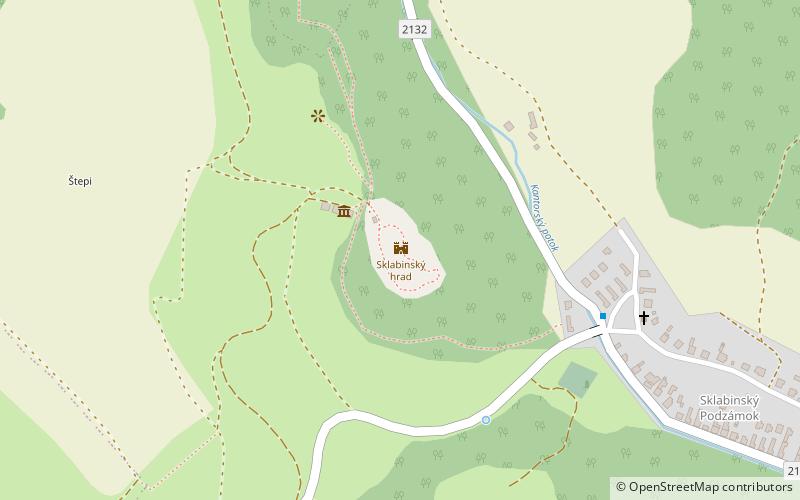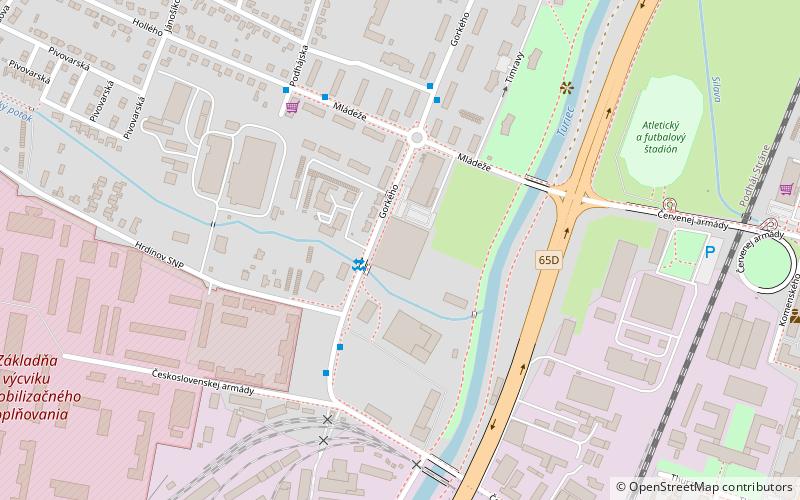Sklabinský hrad


Facts and practical information
Sklabinia Castle - the ruins of the castle, rising at the top of the hill west of the village of Sklabińskie Podzamcze in the Martin poviat in the Żyliński country in Slovakia, on the eastern edge of the Turczańska Valley, at the outlet of the exchange valley at the western foot of the great Fatra.
The Sklabiński Castle was the greatest defense assumption of Turca. Its beginnings date back to the first half of the 13th century, but he was erected on the spot of a much older defensive stronghold with wooden and earthly embankments. The dominant of the castle was a powerful, four -sided donjon, acting as a "last defense" tower.
In the 13th century, the castle was the seat of the castellany, covering the northern part of the Turczańska Valley. In 1315, the King of Hungary Karol Robert gave him to Doncz from the Balassych family. The latter was then a trusted king and a Żupan of the Great Zwoleń, which at that time belonged, among others Not only Turiec, but also Lipt and Orava. In 1339, the Sklabiński Castle became the seat of the new Turczańska Slush. The family after the Balassych sword soon died out and the castle returned to the Hungarian crown. Later he changed the owners many times, including In 1410, King Zygmunt gave it to the Polish nobleman Andrzej Balicki. In 1527, the owners of the Castle and Zupani Turca became the Révay, who from 1561 held this office hereditary.
After a great fire in 1436, the castle was significantly rebuilt. It was created, among others The first strengthened borough with two polygonal towers. In 1468, one of the older facilities was rebuilt into a chapel. From the mid-sixteenth century, when the Turkish power began to threaten from the Panonian Valley, the castle was extended to the foreman from the south-west side. In the years 1610-1612, a new headquarters of Żupan-a representative, multi-line, late-Renaissance castella, finally completed around 1630, was built within 1630. In 1679 the castle was captured by Kuruców Emeryk Thököly, although the greatest damage was done by its owner later- Michał Revay. Looking for the treasures allegedly hidden there in 1691, he ordered, among others Understand the walls of the upper castle, and after the failure of the undertaking, he sold the bells from the castle tower to Jews and works from the walls.
Until the mid -eighteenth century, the castle was the seat of the Turczan Slur. After the transfer in 1746 its archives to Turczański Saint. Marcin began to decline and from the middle of the next century he became abandoned. In 1944, the rest of the Nazis burned to the rest during the Slovak national uprising. After the war, some of the ruins were secured, then restaurant works were started several times, but with meager results. Most works were done socially. The castle plan is very well legible: the walls are preserved in places up to a height of several meters. In the walls of the former chapel, a lot of late -Gothic architectural details have survived to our time, and within the walls of the other parts of the castle - fragments of Renaissance details. Currently, numerous events take place in Podzamcze, including Medieval fencing shows performed by knightly brotherhoods, Sokołów training shows, etc.
The most convenient access to the castle: a path from the center of the village on the southern slopes of the castle hill or a dirt road, moving from the road to Sklabini -10-12 min.
Žilinský
Sklabinský hrad – popular in the area (distance from the attraction)
Nearby attractions include: Museum of the Slovak Village, Slovak National Library, National Cemetery in Martin, Veľká Fatra National Park.







